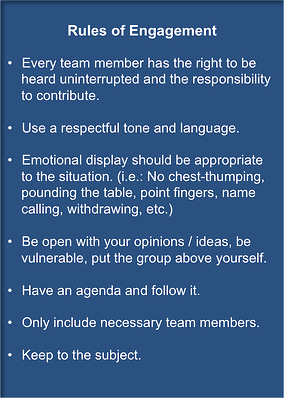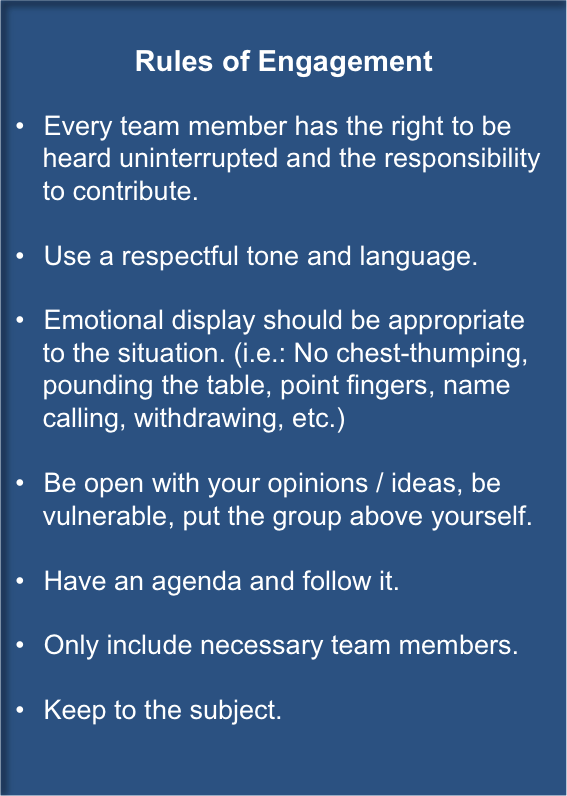I recently asked a client what engagement issues his company is having and he shared, "We have a personal internet use policy that expressly forbids employees from shopping at their desks. Some employees are held accountable and some are not."
Ouch. Imagine the tone this sets for others on the team. Rather than asking questions of oneself like, "How can I create more value for my company and team?" - team members are wondering, "What do I need to do to have the privilege of cruising the internet on company time and get away with it?"
Chances are you are destroying employee commitment, morale and communication through double standards or a lack of standards. A formalized list of acceptable and unacceptable behaviors is an integral way to set to the tone through expected acceptable behaviors, so you will not be in the same situation as the client above.
Patrick Lencioni refers to this list of acceptable/unacceptable behaviors as "rules of engagement" in his Five Dysfunctions of a Team Model. "Rules of engagement" are written guidelines by which all team members are expected to behave, communicate, engage, support, treat, and coordinate with one another. When properly and consistently enforced, the "rules of engagement" create predictability and consistency.
Learn more about Patrick Lencioni's Five Dysfunctions of a Team Model in this infographic.
There are two common threads among companies where engagement and communication are an issue: 
- No formalized "rules of engagement".
- A double standard - The "rules of engagement" are enforced with some but not all employees.
If you do not have a formalized "rules of engagement" - take the time to create one with your team.
3 Steps to creating your team's "rules of engagement".
- Ask your team members to write down the three greatest challenges they have experienced in engagement and communication within the past 60-90 days. If they could go back in time, what would they change?
- Have team members vote on the top 10-15 collected challenges.
- Meeting rules. As an example - no meetings without an agenda.
- How conflicts are handled. Remember, healthy conflict is absolutely necessary to obtain the best ideas and strategies. Healthy conflict is where productivity happens!
- How negative feedback is delivered. Again - discreetly.
- How quickly Customers are responded to.
- One another's time. It is important to identify when it is acceptable to contact one another after hours, on weekends, and over holidays / vacations.
- When it is and is not acceptable to interrupt a team member without an appointment.
- One another's communication. Identify expectations with regard to ease of access as well as timeliness in responding to emails, text, and voicemails.
- Access to one another's teams. Identify the protocol of when it is acceptable to approach one another's staff and the communication channel to be used to inform one another of doing so.
- Demonstrating respect to one another.
- Modeling the mission, vision, and guiding values of the company.
- Professional development.
- Candor.
- Workplace accountability.
- How work quality issues are handled. Specifically, how one team member is expected to bring to the attention of another their quality of work.
- Have team members vote on the top 10-15 collected challenges.
"Rules of engagement" development is just one of the many activities included in The Five Dysfunctions of a Team Workshop - teams must overcome the avoidance of conflict to make commitment, accountability and a focus on results possible.
Creating your own "rules of engagement" is actually easy to do. It just takes time to do so. Remember... You need to slow down to speed up. Set aside 60 minutes in the next week to meet with your team to discuss and create the "rules of engagement."




